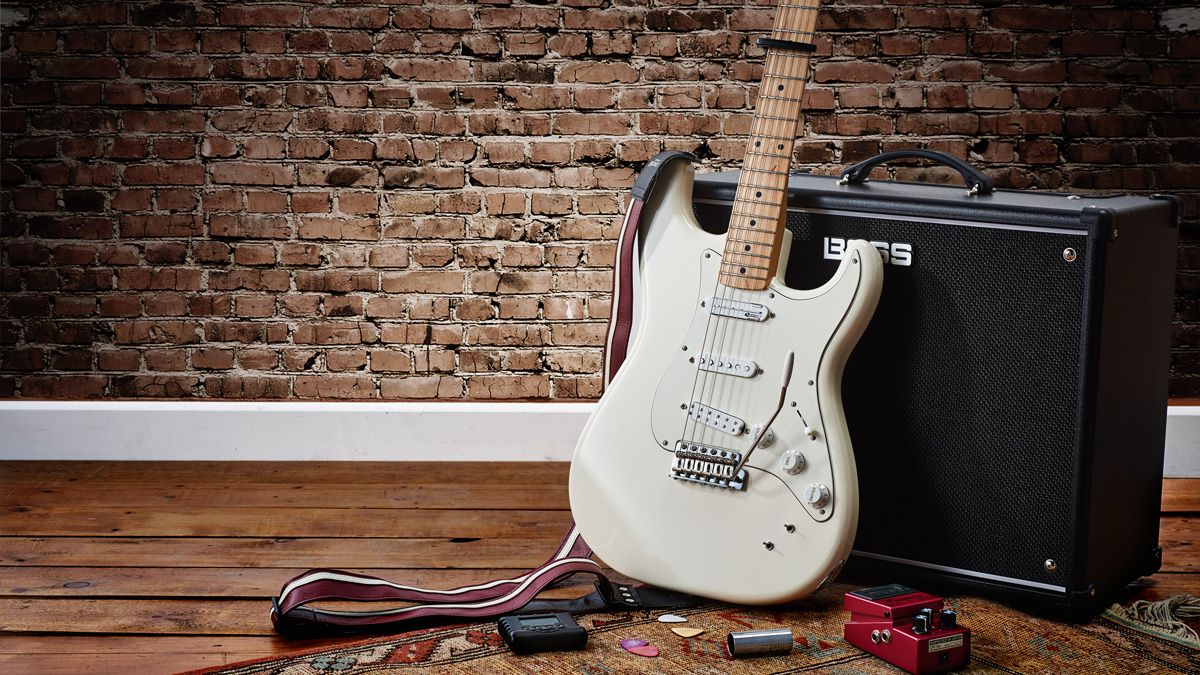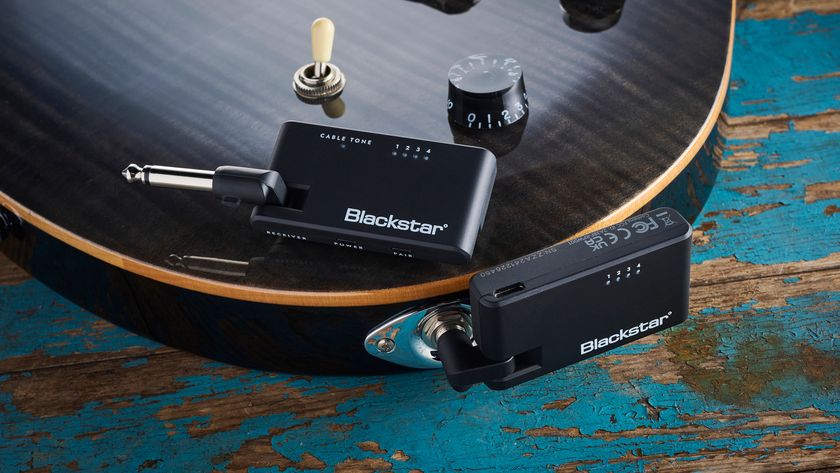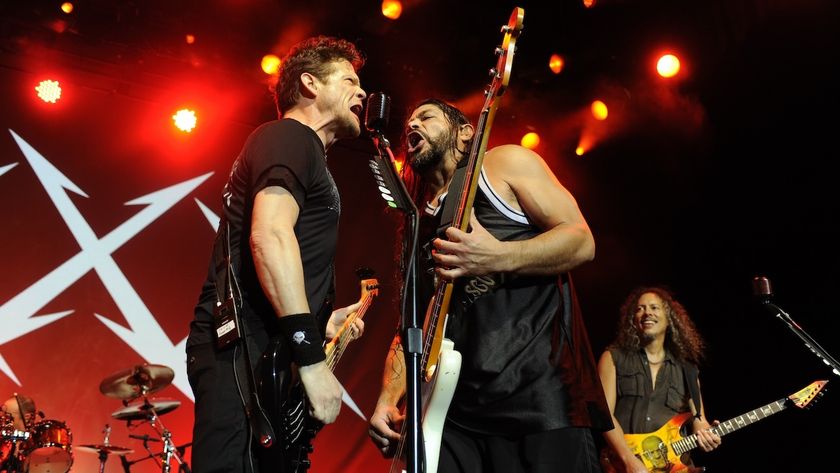10 ways guitarists can keep busy while stuck at home
Can’t leave the house? Here are 10 six-string activities that will occupy your time through a health crisis and beyond...

With tour schedules wiped clean and not even the dingiest of dive bars available to host a gig, times are tough for guitarists and musicians of all stripes.
There is, at least, one upside to being stuck indoors, however: you’ve found yourself with more time to spend on your guitar tone and technique than ever before.
To that end, we’ve had a think and drawn up a 10-point plan to keep you occupied, with a range of guitar-oriented yet surprisingly diverse ways for you to spend those hours in isolation. No excuses now…
1. Learn scales - properly!
Very few guitarists would describe scales as ‘cool’. Yet they’re the building blocks of melody, chords and solos, and an essential pathway to taking your playing to the next level.
Sure, you can get by without them, but mastering a new scale adds to your level of musical understanding in a way that forever changes the way you look at songwriting and lead playing.
For starters, it’s worth investigating the mind-expanding power of CAGED scales, and learning all seven modes - the easy way.
Next, we’d recommend learning how to switch between major and minor pentatonic scales, before moving on to non-Western scales.
Get The Pick Newsletter
All the latest guitar news, interviews, lessons, reviews, deals and more, direct to your inbox!
If you want to study even further, we’d recommend you pay a visit to the best guitar lesson channels on YouTube.
2. Play a new style
We all have our favorite ways of playing, and it can be easy to get stuck working on only that. Yet reaching outside your well-established muscle memory and tonal predilections yields a wealth of ideas you’d never otherwise encounter.
Want to broaden your blues? Explore the guitar’s range with some wide-reaching jazz licks. Rock rhythms getting a little stale? Try injecting some West African grooves. Or if metal’s your bag, how about delving into blues with Kirk Hammett’s guide to playing like Stevie Ray Vaughan?

3. Set up - or mod - your guitar
Don’t settle for a guitar that doesn’t play or sound as good as it should - fix it now! Start by setting your intonation, to ensure notes are in-tune across the fretboard, then you can move on to adjusting the truss rod to optimize your neck angle and action, or even setting up your tremolo system. Acoustic guitar players can look into lowering string height, too.
With deliveries still going right ahead (at the time of writing, at least), you could even order a new set of pickups and a soldering iron to install ’em. Take a look at our guide to the best pickups you can buy to narrow down what tone you’re after.
4. Clean your pride and joy
Quick straw poll: how many of you clean your guitar regularly? Anyone? Exactly. And in the time of a health pandemic, it’s more important than ever.
That includes giving those chrome pickup covers a good polish and wiping all the grim residue your fingers leave behind on the strings. And if you want to make your instrument look extra-purdy while you’re at it, we’ve also got a guide to keeping your guitar in premium condition.

5. Assemble the perfect pedalboard
When you quickly need to get a rig together for your next gig, a pedalboard can end up being a disaster area of ill-fitting Velcro, and whatever power supplies and patch cables you have lying around.
But with no gigs on the horizon, you can really take your time on a pedalboard build. First up, you’d do well to invest in a high-quality ’board and power supply, then really think about your pedal order - we’ve got a guide for that, too.
Remember: there are no rules when it comes to building the perfect rig for you, but keeping it neat and tidy will make it easier to operate and troubleshoot when the time comes to hit the stage again. If you want more info, here’s how to put together the ultimate guitar pedalboard.
6. Write songs
Take it from us: sitting down and setting out to ‘write a song’ is rarely successful - it relies on an elusive combination of emotion, finger movement and a certain amount of luck. But what you can do is use this time to pick up your guitar more often in those breaks between work/videogames/Netflix. Just playing for five minutes every few hours can yield the start of something fresh and exciting - especially if you’ve been working on your scales and new styles.
And you don’t have to start a song entirely afresh, either. Delve into your phone’s voice recorder archive, or open up those half-finished DAW projects that are still missing the middle 8 or melody to make them really pop. The sense of achievement that comes with completing a song is something that can’t be replicated elsewhere - plus, it gives your friends something to listen to while they’re stuck at home, too.
If you’re in need of a few ideas, these ultra-useful chord progressions should help to kickstart your songwriting.
7. Collaborate with your buddies
And, of course, if you’re stuck on songwriting, now’s the time to seek advice from your musical pals with time on their hands. Using the likes of Dropbox and Asana makes it easy to share large audio files and build up a track piece by piece collaboratively.
See this as an opportunity to broaden your horizons, too: maybe your colleague needs a slick rock solo over his funk keyboard opus - and you’re the guitarist with the chops to make it happen.
Some apps and software, such as JamKazam, even allow you to hold virtual band practices in realtime with other musicians from around the world - minus the beer-stained carpets and broken rental amps.

8. Cover a song - and make it your own
We all learn the odd riff and lick here and there, but unless we need to cram for a gig, we don’t take the time to really nail a song. That means playing it all the way through, and learning every chord progression and articulation - and finding a tone to match.
Or you can take a different tack, and offer up your own version of an existing tune. Who could forget the smooth jazz cover of Metallica’s Enter Sandman?
In fact, we’ve got a five-step plan to creating a great guitar cover version on this very site.
9. Film your performances
There may not be any venues to play, but there are still plenty of opportunities to expand your audience. You can start by uploading brief clips of songs you’re learning or riff ideas you’re working on, or post up lessons on licks and solos you’re keen to share.
If you’re feeling really confident, you could even livestream an entire set’s worth of material. This can help to improve your confidence and stagecraft - and gives you a reason to perfect those covers and compositions, too.
10. Go from electric to acoustic - or vice-versa
Like playing the genres we love, it’s easy to go straight for the guitar we’re comfortable with. But it can pay dividends to switch it up and play an instrument you don’t spend anywhere near as much time with.
If you’re an acoustic player going to electric, you may find yourself focusing more on lead playing over rhythm backing, or spending more time at the fretboard’s upper reaches.
For electric guitarists switching up to acoustic, you’ll find your playing exposed, and that can help to hone your technique, as well as generate song ideas you might not otherwise have considered. They might not sound like you expect, either - after all, Tom Morello workshopped many of Rage Against the Machine’s heaviest riffs on an old nylon-string acoustic.
All the above goes for extended-range guitars, too: if you never quite got to grips with seven- or eight-string electrics, flex those fingers and work on understanding the interaction between the extra strings and the six strings you already know and love. You never know what might come out of it.
And ultimately, that’s the best we can hope for in a time when every day spent indoors is utterly predictable: pick up a guitar, and you’re transported to another world - one where you’re never quite sure what sound your fingers might produce next, and what emotions that might conjure within you. Wherever you may be stuck physically, we’d say the guitar makes that a pretty exciting place to be.

Mike is Editor-in-Chief of GuitarWorld.com, in addition to being an offset fiend and recovering pedal addict. He has a master's degree in journalism from Cardiff University, and over a decade's experience writing and editing for guitar publications including MusicRadar, Total Guitar and Guitarist, as well as 20 years of recording and live experience in original and function bands. During his career, he has interviewed the likes of John Frusciante, Chris Cornell, Tom Morello, Matt Bellamy, Kirk Hammett, Jerry Cantrell, Joe Satriani, Tom DeLonge, Ed O'Brien, Polyphia, Tosin Abasi, Yvette Young and many more. In his free time, you'll find him making progressive instrumental rock under the nom de plume Maebe.

“I get asked, ‘What’s it like being a one-hit wonder?’ I say, ‘It’s better than being a no-hit wonder!’” The Vapors’ hit Turning Japanese was born at 4AM, but came to life when two guitarists were stuck into the same booth

“Let's play... you start it off now, Stevie”: That time Stevie Wonder jammed with Stevie Ray Vaughan... and played SRV's number one Strat




![[L-R] George Harrison, Aashish Khan and John Barham collaborate in the studio](https://cdn.mos.cms.futurecdn.net/VANJajEM56nLiJATg4P5Po-840-80.jpg)



